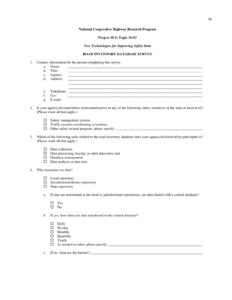Maintaining high-quality data is crucial for effective decision-making and data-driven operations. To ensure data quality, organizations need to establish clear requirements that define the specific standards and expectations for their data. A data quality requirements template provides a structured approach to documenting these requirements.
Using a data quality requirements template offers several benefits. It standardizes the process of defining data quality requirements, ensures consistency across different data sources, and facilitates communication among stakeholders. Additionally, it provides a baseline for assessing data quality and improving data management practices.
Defining Data Quality Requirements
The first step in creating a data quality requirements template is to define the specific data quality dimensions that are important to the organization. Common data quality dimensions include accuracy, completeness, consistency, validity, and timeliness. Each dimension should have specific criteria that define the acceptable level of quality for that dimension.
For instance, accuracy could be defined as the degree to which data values match their true values. The criteria for accuracy could specify a maximum allowable error rate or a specific level of confidence in the data. Similarly, completeness could be defined as the proportion of data values that are present in the dataset. The criteria for completeness could specify a minimum acceptable percentage of missing values.
Once the data quality dimensions and criteria have been defined, the template can be used to document the specific requirements for each data source or dataset. The requirements should be tailored to the specific needs of the organization and the intended use of the data.
Implementing and Maintaining Data Quality
Implementing and maintaining data quality is an ongoing process. The data quality requirements template provides a foundation for developing a data quality management plan. This plan should include processes for monitoring data quality, identifying and correcting errors, and improving data quality over time.
Data quality monitoring involves regularly assessing data against the established requirements. This can be done through automated data quality tools or manual checks. Errors and data quality issues should be identified and addressed promptly. Data quality improvement initiatives should be implemented to address systemic issues and enhance data quality on a continuous basis.
Conclusion
A data quality requirements template is an essential tool for organizations looking to improve their data quality and ensure its fitness for purpose. By defining clear data quality requirements, organizations can establish a common understanding of data quality expectations, facilitate communication among stakeholders, and provide a basis for data quality assessment and improvement.
Implementing and maintaining data quality is a journey that requires ongoing effort and attention. However, by leveraging a data quality requirements template and establishing a data quality management plan, organizations can significantly improve the quality of their data, enabling them to make better decisions, improve their operations, and gain a competitive advantage in the data-driven era.

